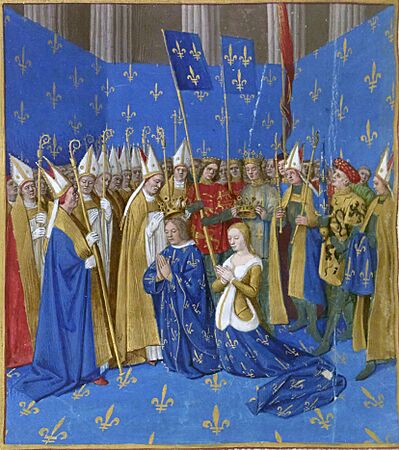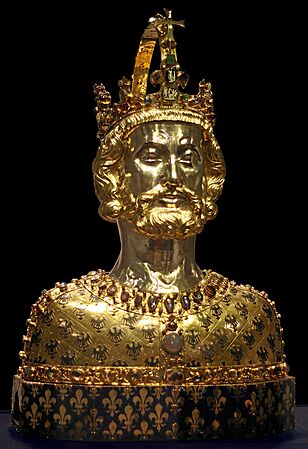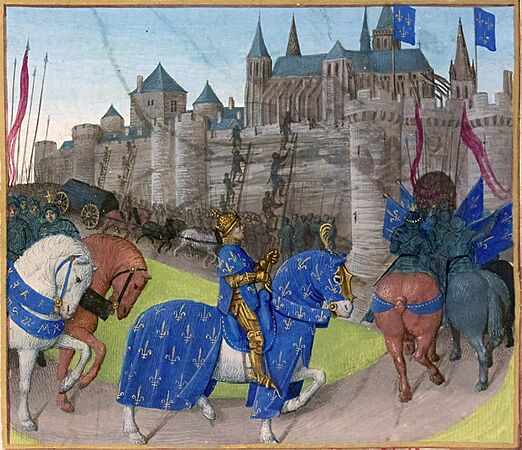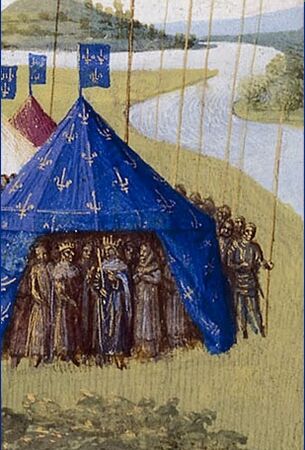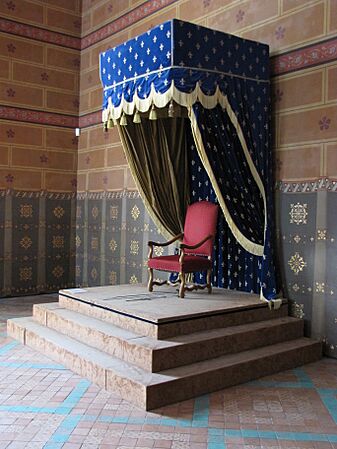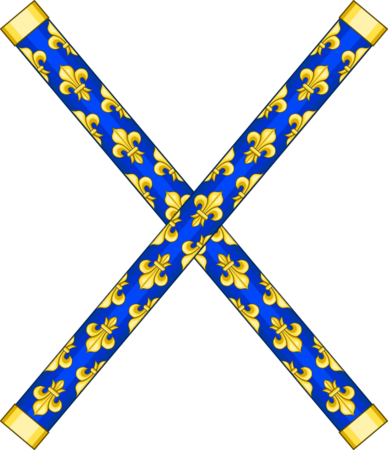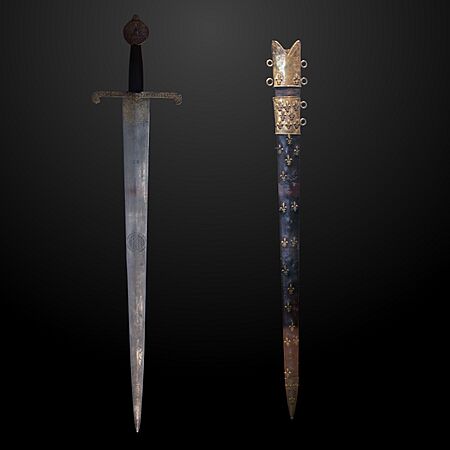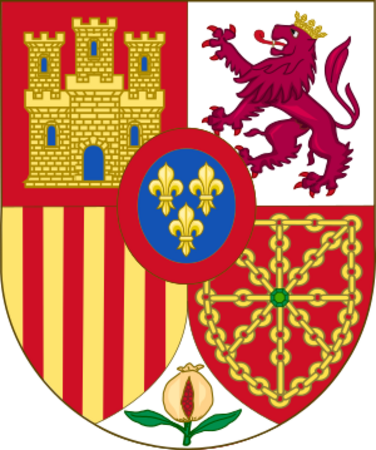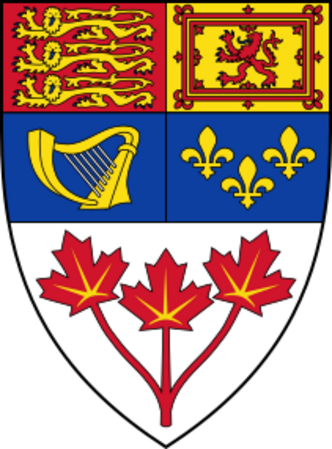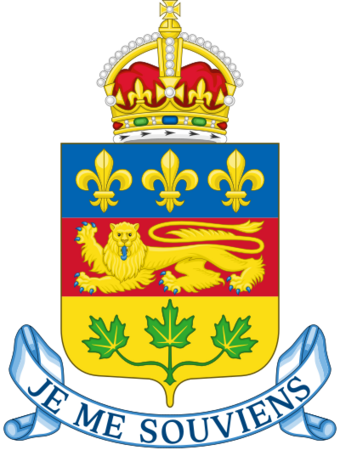Coat of arms of France facts for kids
Quick facts for kids Coat of arms of France |
|
|---|---|
 |
|
| Versions | |
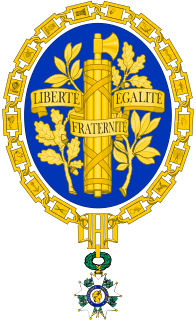
Achievement
|
|
| Armiger | French Republic |
| Adopted | 1905 |
| Crest | Wreath |
| Blazon | Azure, a lictor's fasces palewise upon two branches, of oak and of laurel, crossed in saltire, all or, surmounted by a ribbon of the same charged with the motto in letters sable: "LIBERTÉ, ÉGALITÉ, FRATERNITÉ" |
| Order(s) | Star and grand collar of the Legion of Honour (current version since 1953) |
The coat of arms of France is a special symbol for the country. It shows a bundle of rods called a lictor's fasces. This bundle is placed between branches of laurel and oak. There is also a ribbon with France's national saying: Liberté, égalité, fraternité.
This design also includes the star and grand collar of the Legion of Honour. This is France's highest award. The current design was made in 1905 by an artist named Maurice de Meyère. It is used by the Foreign Ministry for important events. These include state visits and when a new president starts their job.
France is also known for the fleurs-de-lis (lily flower) design. French kings used this symbol a long time ago. You can still see this design representing France in the coats of arms of other places. For example, it appears in the arms of Spain, Quebec, and Canada.
The only national symbol mentioned in France's current constitution is the tricolour flag. This flag has three colours: blue, white, and red.
Contents
What the Symbols Mean
The coat of arms has several important parts. Each part tells a story about France.
The Motto
The motto is "Liberté, égalité, fraternité". This means "liberty, equality, fraternity". It is France's national saying. This motto started during the French Revolution. It became an official symbol much later, during the Third Republic in the late 1800s.
The Fasces
Fasces are a bundle of birch rods. They sometimes have an axe inside. In ancient Roman times, fasces showed the power of leaders. They also stood for unity and agreement. French artists started using fasces as decoration in the 1600s.
During the French Revolution, the fasces became even more important. They were often shown with a Phrygian cap on top. This was a hat that symbolized freedom. The fasces showed that power belonged to the people. They also meant that the Republic was "united and cannot be divided." This is written in the French Constitution.
The Branches
The coat of arms features two types of branches.
- The oak branch: The oak is France's national tree. It is a common symbol of strength and endurance.
- The bay laurel branch: This branch is a symbol of triumph and victory. It comes from Greek mythology. The god Apollo wore a laurel wreath. Winners in ancient sports, like the Olympics, also received laurel wreaths. In Rome, military leaders wore them after winning battles.
The Legion of Honour
The coat of arms also includes the star and grand collar of the Legion of Honour. This is the highest award in France. It was created in 1802 by Napoleon Bonaparte. It is given for military and civilian achievements. The grand collar is a special part of the award. Only the President wears it, as they are the head of the order.
History of the Symbols
France has used many different symbols over time.
Early Symbols (1200s – 1870)
French kings and emperors used their own symbols. These symbols also stood for France itself.
The fleur-de-lis (lily flower) was used by French kings for centuries. After the French Revolution, the Napoleonic eagle became a symbol. This was during the time of Napoleon.
The fleur-de-lis is still popular today. People of French heritage in other countries, like the Acadians and Québécois, still use it. The Napoleonic eagle is also used by the royal family of Sweden.
Here are some examples of past French symbols:
- For many centuries, the French kings used golden fleurs-de-lis on a blue background. This was known as "France ancient."
- Later, King Charles V changed the design to just three fleurs-de-lis. This was known as "France modern." He did this to honor the Virgin Mary and the Holy Trinity.
- During the First Republic (after the Revolution), a simple emblem with a fasces was sometimes used.
- When Napoleon I ruled, the symbol became an eagle. This eagle had a special crown and golden bees.
- After Napoleon, the kings returned, and the fleur-de-lis came back.
- Later, during the Second Empire (with Napoleon III), the eagle symbol returned again.
- Examples of emblazonment
-
Sword sheath of the Grand Constable of France
- Examples of modern marshalling
No Official Coat of Arms (1870–1905)
After the Third Republic started in 1870, France did not have an official coat of arms. French embassies and consulates abroad sometimes used simple symbols. These included the letters "RF" (for French Republic) or a fasces with a Phrygian cap. Diplomats felt this was not good. It did not show France's rich history of symbols.
In 1881, the Foreign Minister, Charles de Freycinet, tried to fix this. He suggested a new coat of arms. But this idea was not fully put into use.
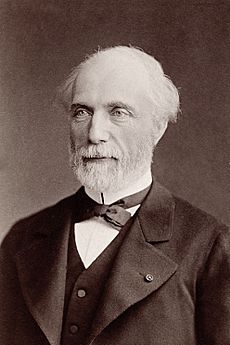
The Current Design (1905–Present)
In 1905, King Alfonso XIII of Spain visited France. Other kings had visited too. These visits highlighted that France still did not have an official coat of arms. The Foreign Ministry decided to act. They asked artists to suggest new national symbols.
Among many ideas, the design by Maurice de Meyère was chosen. This design became the new coat of arms of France. It was meant to be used by embassies and consulates around the world.
-
The coat of arms displayed at the Foreign Ministry in 1905.
De Meyère's original design had a special frame and an oval background. This background had the words "French Republic" on it. After World War I, these extra parts were often left out. The star of the Legion of Honour was also joined by an older version of its grand collar.
In 1953, the collar design was updated.
- Achievements including the 1881 version of the grand collar
Where It Is Used
The coat of arms of France is used in many important places and events:
- 1905: A painting of de Meyère's design was sent to government members. The arms decorated the French foreign ministry for King Alfonso's visit.
- 1922: The arms were put on the Medal for Fidelity to France. This medal was given to people who stayed loyal to France during World War I.
- 1933–1942: The arms were shown on the uniforms of French prefects (local government officials).
- 1953: The United Nations Secretariat asked France for its national coat of arms. This was to be displayed in the General Assembly hall in New York. Robert Louis, an artist, chose de Meyère's 1905 design. This design was then adopted by the UN.
- 1975: President Valéry Giscard d'Estaing used a part of the arms in his presidential standard.
- 1982/1988: The arms appeared on French space suits. This was during joint space missions with the Soviet Union.
- Today: The coat of arms is still used for important events. This includes presidential inaugurations. It was seen when François Mitterrand, Jacques Chirac, and Emmanuel Macron became president.
-
Empty shields in the UNGA hall, meant for national arms, including France's. They were removed in 1956.
See also
 In Spanish: Emblema nacional de Francia para niños
In Spanish: Emblema nacional de Francia para niños
- Armorial of France
- National symbols of France
- Symbolism in the French Revolution


